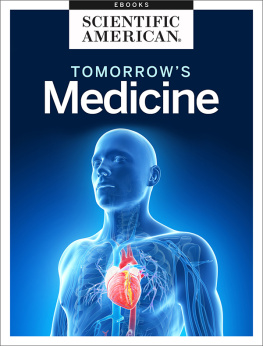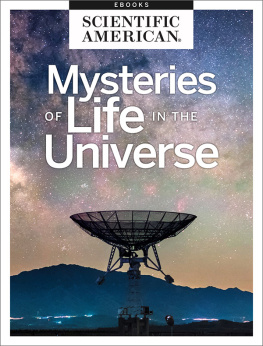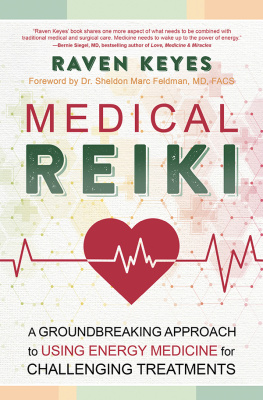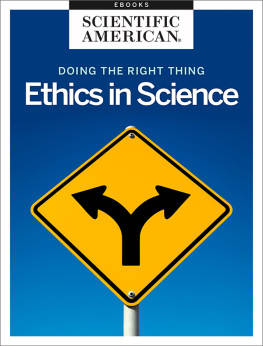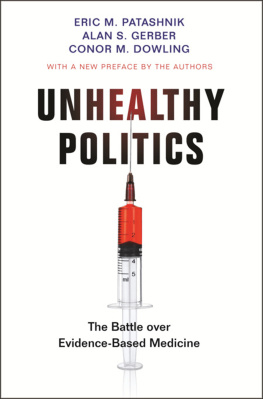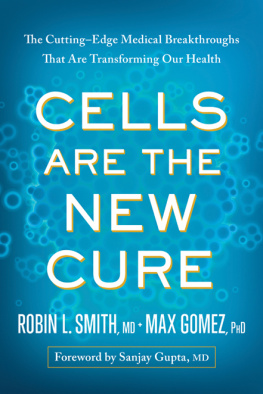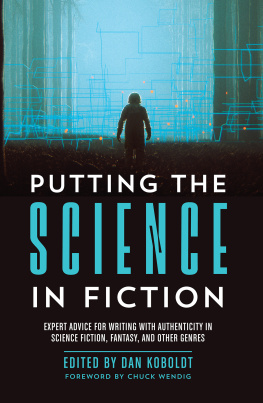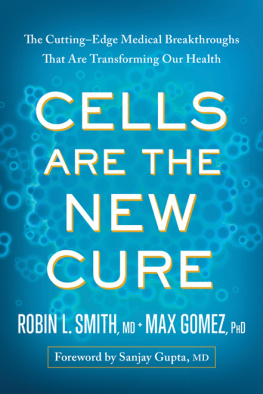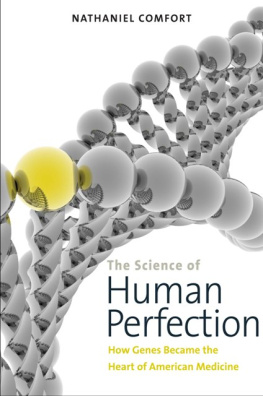TOMORROWS MEDICINE
From the Editors of Scientific American
Cover Image: SEBASTIAN KAULITZKI/Getty Images
Letters to the Editor
Scientific American
One New York Plaza
Suite 4500
New York, NY 10004-1562
or editors@sciam.com
Copyright 2017 Scientific American, a division of Nature America, Inc.
Scientific American is a registered trademark of Nature America, Inc.
All rights reserved.
Published by Scientific American
www.scientificamerican.com
ISBN: 978-1-4668-5887-9


TOMORROWS MEDICINE
From the Editors of Scientific American
Table of Contents
Introduction
by Jesse Emspak
Section 1
1.1
by D. Kacy Cullen and Douglas H. Smith
1.2
by Charles C. Della Santina
1.3
by Ferris Jabr
1.4
by Christof Koch
Section 2
2.1
by Brie Finegold and Gary Stix
2.2
by Yoshiki Sasai
2.3
by Katherine Harmon
2.4
by Ulrich Kraft
2.5
by Paul T. Sharpe and Conan S. Young
2.6
by Jesse Emspak
2.7
by David Pescovitz
2.8
by Ferris Jabr
Section 3
3.1
by A. Paul Alivisatos
3.2
by Paolo Dario and Arianna Menciassi
3.3
by James R. Heath, Mark E. Davis and Leroy Hood
Section 4
4.1
by Elizabeth Svoboda
4.2
by Gary Stix
4.3
by Katherine Harmon
4.4
by Melinda Wenner Moyer
4.5
by Marissa Fessenden
4.6
by Charles Q. Choi
Section 5
5.1
by Daisy Yuhas
5.2
by Nancy Shute
5.3
by Stephen S. Hall
Section 6
6.1
by Thomas Kirkwood
Looking Back, Looking Forward
On September 13, 1913, the pages of Scientific American carried a story of a futuristic technologya new and ingenious method of removing substances from the circulating bloodin other words, a prototype of a dialysis machine. It is possible that the principle may ultimately be adopted to the treatment of disease, the article reads. At the time, the prognoses for serious kidney diseases were grim. The applause the inventor of the device, John Jacob Abel, got for his artificial kidney is understandable.
Though Abel wouldn't live to see a true dialysis machine he died in 1938, five years before Dr. Willem Kolff constructed the first dialysis machine for humans he pioneered the idea, and his work inspired Kolffs creation. That's part of what this collection is about. It's a snapshot of the future of medicine, a look at just a few of the technologies that could profoundly changeand extendour lives, even if they are just in their fledgling stages today.
In 1900, artificial organs were science fiction, and the five areas of medicine discussed in this eBookcybernetics, regenerative medicine, nanotechnology, assistive devices and genetically tailored medicinesfigure large in our collective imaginations thanks in part to science fiction writers. Though the technology is still a long way from producing a Lee Majors- or Lindsay Wagner-like superhuman, in Bionic Connections, D. Kacy Cullen and Douglas Smith discuss synthetic limbs that function as well (or better) than our own. Echoes of Fantastic Voyage abound in Nanomedicine Targets Cancer by James Heath, Mark Davis and Leroy Hood, who examine how miniaturized tools can both measure the molecular interactions of disease and deliver targeted therapies. Someday, these early efforts may be as commonplace as dialysis is today.
A century from now, will cancer be to our descendants what smallpox is to us? Will the sight of an amputee be a rarity, with cybernetic limbs controlled by thought and nearly indistinguishable from the biological ones? Perhaps most people will have their genomes read for indications of future disease, and take steps to prevent it or even to cure inherited disorders. Will we replace some drugs with tiny machines, fanning out inside the body to repair damage?
There are still limits. Though cancer is much more survivable that it was even a decade ago, we now know that speaking of it as one disease is effectively meaningless. A "cure" may lie in prevention. Immortality or at least agelessness may be forever out of our reach. As Thomas Kirkwood notes in his piece, Why Cant We Live Forever? death might be the price we pay for our complex biology.
Even so, the doctors of 1913 would surely be impressed by what medical science has accomplished in the past century: antibiotics, organ transplants and the elimination of smallpox to name a few. The next 100 years should be equally impressive, and with the various types of new technologies on the horizon, many of us have a good chance of seeing it happen.
Jesse Emspak
Book Editor
SECTION 1
We Can Rebuild You: Cybernetics
Bionic Connections
by D. Kacy Cullen and Douglas H. Smith
In one of the most iconic scenes in science-fiction films, Luke Skywalkercasually examines his new synthetic forearm and hand. The Star Wars hero isable to move the fingers by extending and contracting pistons shown throughan open flap along the wrist. Then he senses the robotic surgeons pinprick ofone of the fingers. Not only can the prosthesis be moved with Skywalkersthoughts, it feels to him like his own hand.
What the audience does not see, however, is the actual connectionbetween man and machine. And yet to neuroscientistslike the two of us, it is precisely this hidden interface thatshould have been at the center the scene. In order for such alinkup to work, it would have to have converted nerve impulsesfrom the brain into electrical signals in the artificial arm, andvice versa. In the world beyond movies, however, no one has yetfigured out how to splice together nerves and electrical wires ina way that allows them to control an artificial limb as if it werea natural extension of the body.
The failure is not surprising. For one thing, nerves and theelectrical wires needed to regulate the electronics in a prosthesistransmit entirely different kinds of signals. Electronic devicesdepend on the flow of electrons across conductive materialsand through semiconductors and transistors; the nervous systemrelies on the depolarization of cell membranes and the releaseof signaling chemicals in the gaps between nerve cells.For another, the linkage would require implanting wires andother kinds of electronics into the body, which normally perceivessuch implants as foreign and thus unleashes attacks thatwould generate scar tissue around an interface and disrupt itsfunctioning.
Advances in nanotechnology and tissue engineering overthe past few years, however, are addressing both challenges.Rather than trying to force nerves to communicate directlywith the standard electronics in modern prostheses, we andothers are building new kinds of bridges between nerves andartificial limbslinkages that take advantage of the nervoussystems inborn ability to adapt itself to new situations. Indeed,recent research in the laboratory has brought us closer to thegoal of developing an artificial limb that, like Luke Skywalkers,can be moved and sensed by the brain.
Combining Motor and Sensory Input

